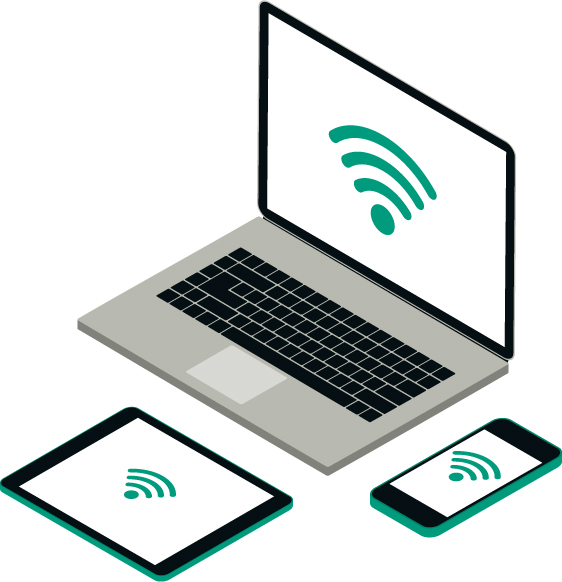
Remote management and advanced maintenance in fire-fighting systems
Mozzanica has introduced new innovative digital solutions for advanced maintenance in the fire-fighting sector, combining normal maintenance activities with “IoT” (Internet of Things) systems for integrated safety management.
A cross-platform technology to integrate products (systems and fire-fighting devices) with the people involved in their life cycle (designers, customers, maintenance technicians, certifiers, control bodies) through digital processes.
Digital efficiency of systems
 CtRM (Customer Things Relationship Management) is a secure access multi-user platform in the cloud, designed and developed by PiCube, Mozzanica's IoT partner, to digitally manage products designed and maintained by Mozzanica for its customers.
CtRM (Customer Things Relationship Management) is a secure access multi-user platform in the cloud, designed and developed by PiCube, Mozzanica's IoT partner, to digitally manage products designed and maintained by Mozzanica for its customers.
Advantages of the CtRM platform
 Multidevice
Multidevice- Information is managed centrally in the cloud, always kept up-to-date and accurate
- Information is available 24/7 and easily accessible by multiple recognized and identified users at the same time
- Information can be used directly on tablets, smartphones, handhelds and PCs both at the plant and remotely
- Information is segmented according to the type of user/role
- No access to the customer's corporate network thanks to the use of a dedicated IoT gateway.

Within the CtRM platform that contains and manages the system data in the cloud, specific components are active: SeeIT allows continuous monitoring of the system and reports its status to a remote control room, while TagIT allows the unique identification of the controls, equipment and components of the fire prevention system by reading digital tags that allow you to consult the digital structure of the systems and their history.
The SeeIT and TagIT components facilitate the online compilation of maintenance and surveillance checklists (CheckIT) and the generation of historical reports of the fire-fighting equipment and/or systems under maintenance.
The certified documentation is available in digital format to all inspection and periodic control bodies, in compliance with current safety regulations following the same logic of secure and segmented access.

SeeIT: Remote control and remote maintenance
The SeeIT component of the CtRM platform allows continuous 24/7 monitoring of installed and/or maintained systems that are equipped with IoT gateways, through the cloud directly to the technician on call.
Any malfunction or alarm can be reported remotely through the use of different digital channels (mobile devices, PCs, information monitors, emails, SMS, etc.) that can only be consulted by those who, depending on their different degrees of access, are authorized to remotely correct the anomalies found, in compliance with the regulations.
Maintenance optimization
Remote monitoring also allows the optimization of the normal ordinary and extraordinary scheduled maintenance activities because it makes it possible to verify the status of the customer's plants in real time and proactively and therefore organize priorities and resources to use during interventions.


Integrable and flexible
Because of its design flexibility, the SeeIT platform allows the digital view of the system to be integrated with third-party fire-fighting devices from different manufacturers, as well as other technological apparatuses and systems installed and monitorable at the customer's premises.
SeeIT can also be integrated via the cloud with Mozzanica's proprietary technology for early fire detection using predictive thermographic systems.

TagIT: advanced system management
TagIT is the component of the CtRM platform that uniquely identifies all the objects of the fire prevention system (devices, systems and their components) by using digital identifiers (Tags) placed directly on the systems and their components, such as QR Codes, RFID tags or NFC.
It allows you to create, access and update the contents of the digital cloud library of the system and the devices installed at the customer's location, all online and in real time.


The controls and objects comprising the fire-fighting system are organized and identified for consultation within the CtRM platform in a hierarchical manner, both overall and in terms of their components and subsystems.
Information at your service


By scanning the identifier with a portable terminal, the authorized maintenance technician can access all the documentation related to the object in real time in the cloud, verify its history, make updates and upload new documents.
All the activities carried out on the terminal are automatically sent to the CtRM platform, which updates the contents and makes them immediately accessible.

Digital library
Customers and fire-fighting professionals involved in the management of the life cycle of a firefighting system can access specific technical documentation (user and operating manuals, maintenance procedures, technical diagrams, illustrations, multimedia content, project documents, maintenance reports, etc.) both directly from the fire-fighting system during maintenance activities and from the company's back office.

